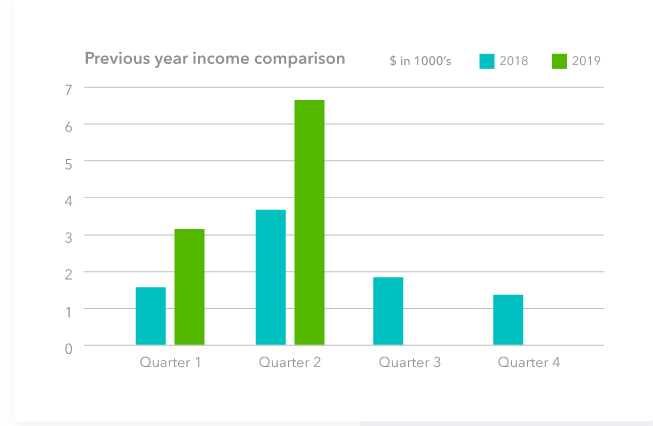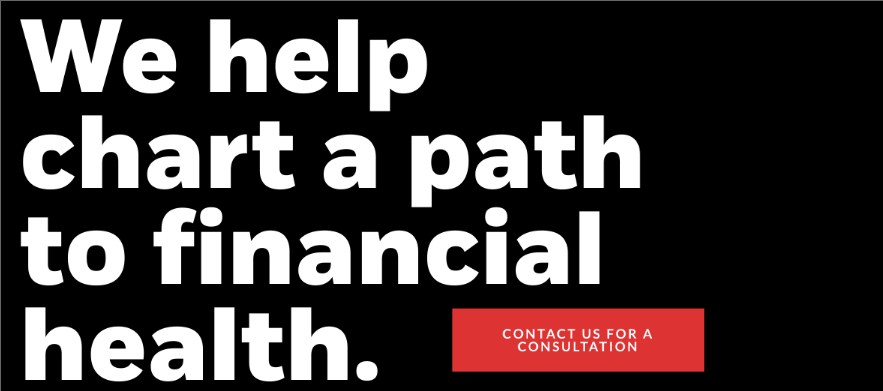How to read & analyze an Income Statement AKA profit and loss reports
As a startup founder or small business owner, you know how important it is to keep your numbers in check. Knowing how much revenue is coming in, how much money is going out, and how much profit you are making is essential to making smart business decisions. An income statement is a financial statement that shows you the company’s income and expenditures. It also shows whether a company is making a profit or loss for a given period (monthly, quarterly, or annually).
 The income statement, along with the balance sheet and cash flow statement, are one of the three financial statements that help you understand how well your business is performing financially. It is also sometimes referred to as a profit and loss statement, (P&L), statement of operation, statement of financial result or income, or earnings statement. Investopedia article explains that the words “profits,” “earnings,” and “income” all mean the same thing and are used interchangeably.
The income statement, along with the balance sheet and cash flow statement, are one of the three financial statements that help you understand how well your business is performing financially. It is also sometimes referred to as a profit and loss statement, (P&L), statement of operation, statement of financial result or income, or earnings statement. Investopedia article explains that the words “profits,” “earnings,” and “income” all mean the same thing and are used interchangeably.
Whether you are an investor or business owner, once you learn how to read income statements, and you’ll unlock the ability to understand a company’s finances better. With a little guidance and practice, any business owner can learn to use their financial statements to drive smart business decisions and become more financially savvy.
Importance of an income statement
An income statement helps business owners decide whether they can generate profit by increasing revenues, decreasing costs, or both. It also shows the effectiveness of the strategies that the business set at the beginning of a financial period. The business owners can refer to this document to see if the strategies have paid off. Based on their analysis, they can come up with the best solutions to yield more profit.
How the income statement and other financial statements work together

Your income statements are most powerful when used in tandem with your balance sheet and cash flow statements.
A balance sheet tells you everything your business is holding on to at a particular point in time—your assets and liabilities. The balance sheet tells you where you are, while the income statement tells you how you got there.
A cash flow statement tells you how much cash you have on hand and where it came from. This is essential if you use the accrual basis of accounting. Under that system, you may have recorded income in accounts receivable—for instance, as an invoice you’ve sent to a client—before you’ve actually received the payment. That’s good for planning future income, but not good for knowing how much cash you have to work with. The cash flow statement gives you a clear view of what you have to spend right now.
By reading and analyzing all three financial statements, you’ll get a more complete view of your company’s financial performance—so you can plan for growth, and avoid some financial mistakes.
Parts of an income statement
Your income statement or P & L is broken down into different line items. Some of those line items can be grouped together into categories, while others stand alone as categories of their own.
Your income statement follows a linear path, from top line to bottom line. Think of the top line as a “rough draft” of the money you’ve made—your total revenue, before taking into account any expenses—and your bottom line as a “final draft”—the profit you earned after taking account of all expenses.
| Multi-Step Format | Single-Step Format |
| Net Sales | Net Sales |
| Cost of Sales | Materials and Production |
| Gross Income* | Marketing and Administrative |
| Selling, General and Administrative Expenses (SG&A) | Research and Development Expenses (R&D) |
| Operating Income* | Other Income & Expenses |
| Other Income & Expenses | Pretax Income |
| Pretax Income* | Taxes |
| Taxes | Net Income |
| Net Income (after tax)* | — |
We’ll use a multi-step income statement as an example. Multi-step income statements are one of two types of income statements.
Acme Widgets Enterprises Inc.
Income Statement
For Year Ended Dec. 31, 2021
| Category | Amount |
|---|---|
| Total Revenue | $57,050.68 |
| Cost of Goods Sold (COGS) | $24,984.79 |
| Gross Profit | $32,065.89 |
| General Expenses | $11,049.55 |
| *Rent | $9,000.00 |
| *Bank & ATM Fee Expenses | $9.43 |
| *Equipment Expenses | $742.40 |
| *Marketing Expenses | $503.53 |
| *Merchant Fees Expenses | $794.19 |
| Operating Income | $21,016.34 |
| Interest Expense | $5,000.00 |
| Earnings Before Income Tax | $16,016.34 |
| Income Tax Expense | $10,000.00 |
| Net Income | $6,016.34 |
Total Revenue (aka Total Sales, Sales Revenue, Gross Revenue)
Your total revenue is all the money that has come into your business. As you move down your income statement, you’ll see that amount chipped away, used to pay for the cost of creating your products or services and keeping your company running.
This is the top line of your income statement. A lot of business owners focus their attention on the bottom line—their net profit. But your sales revenue is important, too. There’s only so much you can do to improve your bottom line by cutting expenses. At some point, you’ll hit a ceiling, and the only way to grow the bottom line is to grow your revenue.
You’ll look at your revenue later when it’s time to calculate your profit margin—the relationship between how much you spend versus how much you earn.
COGS (Cost of Goods Sold, aka Cost of Sales)
COGS is the price you pay to create your products or services. COGS consists of direct expenses. In manufacturing, it’s the price of raw products plus labor. In retail, the total wholesale price of the products you sell. In the service industry, it’s the cost of paying wages and providing the supplies you need to perform those services.
Some depreciation expenses also get rolled into this line item. So if you spend a large amount of money on an essential piece of equipment, and you’re depreciating part of its value every accounting period, it will increase your COGS.
Gross Profit
Once you take your total revenue and subtract your COGS, you get your gross profit. It’s the amount you take home before taking into account other, indirect expenses.
Your gross profit significantly contributes to your net income. When you buckle down and decide to grow your bottom line, the first place you’ll look to make improvements is with your gross profit. There are only two ways to increase your gross profit: To increase the amount your customers or clients pay or to decrease the number of COGS you pay. The relationship between these factors is called your gross margin—we’ll cover that shortly.
General Expenses (aka Selling, General, and Administrative Expenses, or SG&A)
Operating expenses are the indirect costs associated with your business. Some of these are fixed expenses—they’re the same every reporting period. Others are variable expenses—they change from one period to the next.
Likewise, some are part of overhead—the amount you pay every month just to stay in business, regardless of sales, such as rent. Other operating expenses are operating costs—they increase in tandem with the number of sales you make.
If you’re trying to cut costs and grow the bottom line, general expenses are the second place you look, after COGS. Simple measures such as making sure you use utilities efficiently, getting a better bang for your buck by using effective marketing, or reducing wear and tear on equipment that requires maintenance: All of these are ways to reduce your SG&A.
Operating Income
When you subtract general expenses from your gross profit, you get your operating income. This is your income after taking into account all of your expenses, not including non-operating expenses—interest payments and taxes. Accountants and financial analysts usually prefer to look at your operating income—rather than your net income—to determine how profitable your company is.
In their eyes, the money you save with the help of a CPA—by reducing your tax burden or helping you pay lower interest on any debt—is separate from money you save by operating your business day-to-day. Any money saved in that way will impact your income tax and interest payments—neither of which are included when calculating operating income.
Think of it in terms of job roles. You, or the managers at your company, are in charge of dealing with total revenue, COGS, and general expenses.
Your accountant is responsible for managing your tax burden and your company debt. Day-to-day activities affect operating income. Tax returns and loan agreements do not.
Interest Expense
Your interest expense is what you spend to pay off your small business loans or lines of credit. In some cases, if your company has investments in stocks, the interest or dividends you receive is reported here as income.
After reducing COGS and general expenses, interest expense is the third place you look to improve your bottom line. You should do this with help from your accountant, who may recommend you restructure your debt, or prioritize paying down certain higher interest debts over others.
Income tax
Finally, the income tax line item reports your estimated income tax for the year. Good accounting can reduce your tax burden, but there are only so many deductible expenses you can report. In the end, everyone pays taxes. For that reason, this is the last place you turn when you’re trying to increase your net income.
Net Income (aka Net Sales, or the bottom line)
Subtract the cost of interest payments and income tax from your operating income, and you get the bottom line. This is how much money your company brought in for the period of time your income report covers.
If your total expenses outweigh your revenue, your net income will be in the negative. That means you’re operating at a net loss. For lean startups still fine-tuning their technology and attracting venture capital, temporarily operating at a loss may not be a bad thing. For just about everyone else, it is.
Your mission as a business owner is to keep your bottom line out of the red.
Calculating profit margins
If all these line items have your head spinning, have no fear: Profit margins are here to save you.
When you calculate profit margins, you distill information from your income statement into percentages. A profit margin shows you the relationship between how much you spend, and how much you make, so you get a bird’s-eye-view of your company’s financial performance. Lenders and investors look at your profit margins to see how profitable your company is, and decide whether to give you money.
We’ll look at the three most important margins for any business: The gross profit margin, the operating profit margin, and the net profit margin.
Gross profit margin
The formula for gross profit margin is:
Gross Profit Margin = (Total Revenue – COGS) / Total Revenue
Your gross profit margin tells you how much income your company makes for each dollar it earns, after taking into account COGS.
Using our example statement from above:
$57,050.68 – $24,984.79 / $57,050.68 = 0.56, or 56%
So, for every dollar of revenue, Acme Enterprises Inc. keeps $0.56.
Keep in mind, this is a gross profit margin—it doesn’t take into account general expenses, interest payments, or income tax.
Operating profit margin
The formula for operating profit margin is:
Operating Profit Margin = Operating Income / Total Revenue
Your operating profit margin is the portion of each dollar your business keeps after taking into account both COGs and general expenses.
Using the statement above:
$21,016.34 / $57,050.68 = 0.37, or 37%
For every dollar in revenue earned, the business takes home $0.37, after taking into account COGs and operating expenses.
You can compare your operating profit margin and your gross profit margin to see how much of your revenue goes towards general expenses. For example, 56% minus 37% is 19%. Meaning, you spend $0.19 from every dollar on the cost of operations.
Net profit margin
The formula for net profit margin is:
Net Profit Margin = Net Income / Total Revenue
Your net profit margin tells you what portion of each revenue dollar you can take home as net income. This takes into account all your expenses—COGS, general expenses, interest payments, and income tax.
Using the example statement:
$6,016.34 / $57,050.68 = 0.11, or 11%
You have a net profit margin of 11%. Meaning, for every dollar that comes into your company, you keep $0.11 as retained earnings.
Your net profit margin is the number you’ll continue to focus on as your read and analyze each income statement your company produces. By growing its profit margin, your company becomes more efficient.
Conclusion
Analyzing your income statements tells you how your company is performing here and now. But you can anticipate your future by creating hypothetical income statements for the accounting periods to come. When carefully prepared, compiled, reviewed, and managed, financial statements provide invaluable insight into a company’s profitability and viability. While they can be cumbersome to create, the value they provide far outweighs the headache of closing the books and reviewing them. Huckabee CPA is a Quickbooks Online certified pro, If you have any questions about financial reporting for your company or need help creating monthly financial statements feel free to contact Huckabee CPA for a free consultation.












